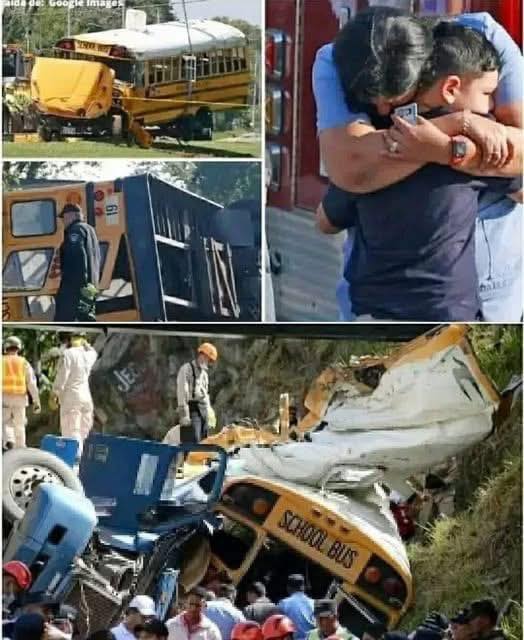It has been eight years since the nation of Tanzania awoke to the shattering news of the Karatu school bus disaster, a calamity that extinguished the lives of thirty-two eager children, two devoted teachers, and their bus driver. The date—May 6, 2017—remains etched into the collective memory of the country, a day when a routine school outing turned into a national tragedy and left an indelible scar on families, friends, and an entire generation of young learners.
On that misty Sunday morning, pupils from Lucky Vincent Primary School in Arusha climbed aboard the yellow bus with bright eyes and crisp uniforms, bound for a mock national examination at a regional testing center. For many, it was their first taste of the ceremony and solemnity that would accompany the most important exams of their lives—an occasion friends and relatives had celebrated for generations. Teachers Esther Mlay and Josephine Selu served as chaperones, their cheerful encouragement mingling with the buzz of youthful excitement as the vehicle set off along the winding roads of the Karatu Highlands.
But within minutes, the early downpour turned the pavement treacherous. As the bus rounded a sharp bend overlooking a steep embankment, its tires lost their grip. Witnesses later recounted a heart-stopping moment when the driver struggled to steady the wheel, only to see the bus lurch off the asphalt and plunge into the ravine. Villagers living below heard the crash and rushed up the hillside with ropes, blankets, and lanterns, their voices mixing in prayer and frantic calls for survivors. When first responders arrived, they found a scene that defied imagination—twisted metal, shattered glass, and tiny shoes scattered like forgotten memories.
Over the next several hours, rescue teams worked through heavy rain to recover bodies and pull the injured to safety. Medical staff at the Karatu District Hospital and Arusha Referral Hospital labored through the night, desperately trying to save those pulled from the wreckage. By dawn, the heartbreaking tally was complete: thirty-two children, two teachers, and driver Hamisi Mwakio had perished. Another dozen children bore injuries ranging from broken limbs to severe head trauma.
In towns and cities across Tanzania, news of the accident spread like wildfire. Prime Minister spoke at a candlelight vigil in Dar es Salaam, promising a thorough investigation and renewed focus on road safety. President Magufuli, his voice heavy with sorrow, declared three days of national mourning and ordered a review of every school transport contract in the country. Funerals were held in the children’s home villages: songs of remembrance mingled with tears as siblings, parents, and friends laid tiny coffins to rest beneath acacia trees.
In the weeks that followed, investigators discovered that the bus’s brakes were worn beyond safe limits, its tires balding on one side, and its chassis lacking a functional emergency exit door. The company operating the vehicle faced criminal charges, and several officials from the local education department were suspended for negligence. Public outrage demanded accountability—and for the first time, Tanzanians across social and economic lines found a common cause in pushing for safer roads for their children.
Over the ensuing years, that collective grief transformed into determined action. New regulations mandated annual safety inspections for all school buses, harsher penalties for drivers violating speed limits, and the installation of seat belts on every passenger seat. Non-governmental organizations partnered with the Ministry of Education to train hundreds of teachers and drivers in first aid and emergency response. In Karatu itself, community leaders erected a memorial park at the accident site, planting flowering jacaranda trees and installing a stone monument inscribed with the names of each child, teacher, and driver lost. Every May 6, the bells of the local church toll twelve times—once for each decade since a child’s birth—while families gather to lay wreaths and release white doves overhead.
Today, as Lucky Vincent Primary enters its thirty-fifth academic year, headteacher Hassan Salim greets new classes with a quiet determination. He invites older students to volunteer as “safety ambassadors,” helping younger pupils buckle seat belts and reminding drivers to respect speed limits. “We will never forget what happened,” he says, “but we refuse to let fear rule us. Instead, we teach responsibility and compassion—so that every child can pursue their dreams without worrying about the journey getting them there.”
Eight years on, the memory of that rain-spattered morning endures in missing shoes hung on classroom walls, in the photographs of smiling children held by grieving parents, and in the collective promise of a nation that the loss of those young lives will not have been in vain. Through stricter laws, memorial tributes, and community vigilance, Tanzania continues to honor the fallen by safeguarding the futures of all its children—because a nation that remembers is also a nation determined to protect its most precious treasure.
